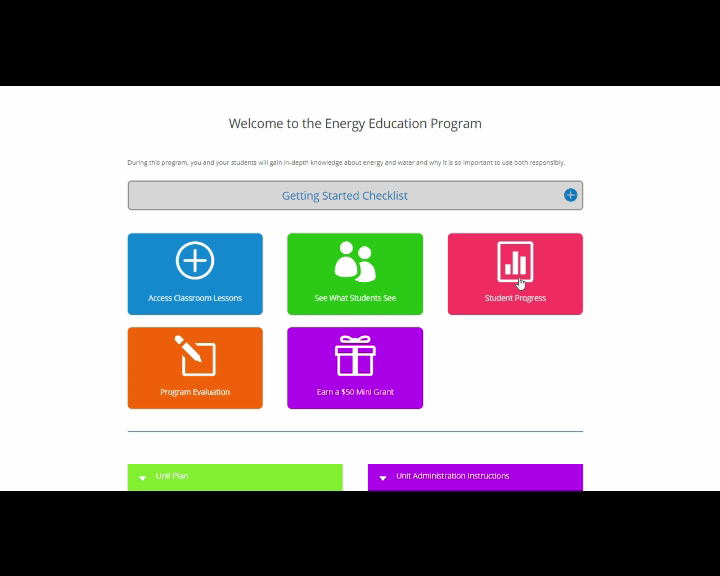1. Students discuss ways we use water and reflect on how much water their families use weekly, based on data they collected 1 week prior to the lesson.
2. Students learn that the Tarrant Regional Water District provides their water from lakes and reservoirs and that building a reservoir is a lengthy process.
3. Students brainstorm the pros and cons of building reservoirs to supply water and reflect on simpler, less costly ways to increase our water supply such as conservation.
-S.5.1.A (i) – Ask questions, conduct investigations, and explain scientific concepts using proper tools and models.
-S.5.1.B – Plan and perform descriptive or experimental investigations and apply engineering methods to solve problems.
-S.5.1.E – Collect observations and measurements as evidence;
-S.5.2.B – Examine data for significant patterns, features, or errors.
-S.5.2.C – Use mathematical calculations to compare patterns and relationships.
-S.5.5.B – Identify and investigate cause-and-effect relationships to explain scientific phenomena or analyze problems.
-S.5.12.C – Describe a healthy ecosystem and how human activities can be beneficial or harmful to an ecosystem.
-S.5.11 – Understand the value of natural resources and develop solutions, such as recycling or conservation, to reduce environmental impacts.
1. Students learn how severe drought in the 1950s led state leaders to create the Texas Water Development Board to conserve and develop water resources.
2. Students discuss graphs from the 2022 State Water Plan showing population growth and increasing water demand in North Texas.
3. Students learn how the Tarrant Regional Water District, our raw water provider, is developing new water resources.
4. Students read and share case studies that highlight local water conservation efforts.
-S.5.1.A – Ask questions and define problems based on observations or information from text, phenomena, models, or investigations;
-S.5.2.B – Analyze data by identifying any significant features, patterns, or sources of error;
-S.5.3.A – Develop explanations and propose solutions supported by data and models;
-S.5.3.B – Communicate explanations and solutions individually and collaboratively in a variety of settings and formats; and
-S.5.3.C – Listen actively to others’ explanations to identify relevant evidence and engage respectfully in scientific discussion.
-S.5.5.G – Explain how factors or conditions impact stability and change in objects, organisms, and systems.
-S.5.11 – Understand the value of natural resources and develop solutions, such as recycling or conservation, to reduce environmental impacts.
1. Students discuss how much water the average person uses daily and learn that our water comes from lakes managed by the Tarrant Regional Water District.
2. Students learn the process for providing clean water to our community and create a 3-D model of the water supply system.
3. Students reflect on the extensive infrastructure and labor required to deliver clean water and how this affects the value of water and the importance of conserving it.
-S.5.1.A – Ask questions and define problems based on observations or information from text, phenomena, models, or investigations;
-S.5.1.G – Develop and use models to represent phenomena, objects, and processes or design a prototype for a solution to a problem.
-S.5.2.A – Identify advantages and limitations of models such as their size, scale, properties, and materials
-S.5.2.D – Evaluate experimental and engineering designs
-S.5.5.C – Use scale, proportion, and quantity to describe, compare, or model different systems;
-S.5.5.D – Examine and model the parts of a system and their interdependence in the function of the system;
-S.5.11 – Understand the value of natural resources and develop solutions, such as recycling or conservation, to reduce environmental impacts.
1. Students learn how much water we use daily and that our water comes from lakes.
2. Students discuss how we rely on rainfall to fill these lakes and review the water cycle.
3. Students observe the results of an evaporation experiment, started 2 days before the lesson, and discuss the role of oceans in the water cycle.
4. Students watch a video to learn about drought in Texas and listen to a recording to learn the difference between weather and climate.
5. Students reflect on how droughts affect our water supply and the need to conserve water.
-S.5.1.A – Ask questions and define problems based on observations or information from text, phenomena, models, or investigations;
-S.5.1.G – Develop and use models to represent phenomena, objects, and processes or design a prototype for a solution to a problem.
-S.5.3 – Develop evidence-based explanations and communicates findings, conclusions, and proposed solutions
-S.5.8.A – Describe how energy transformations occur in systems, such as sunlight driving evaporation in the water cycle.
-S.5.10.A – Explain how the Sun and oceans interact to drive the water cycle and affect weather.
-S.5.11.A – Design solutions to minimize environmental impact through conservation and recycling.
-S.5.12.A – Describe how organisms survive by interacting with biotic and abiotic factors in ecosystems.
1. Provide students with the unique Student Enrollment Code provided in your registration email and above. This code associates you with your students. Do not share with other teachers.
2. Direct students to tinkerteach.com/trwd and click Students Register.
3. Confirm each student successfully enrolled in your online teacher portal.
